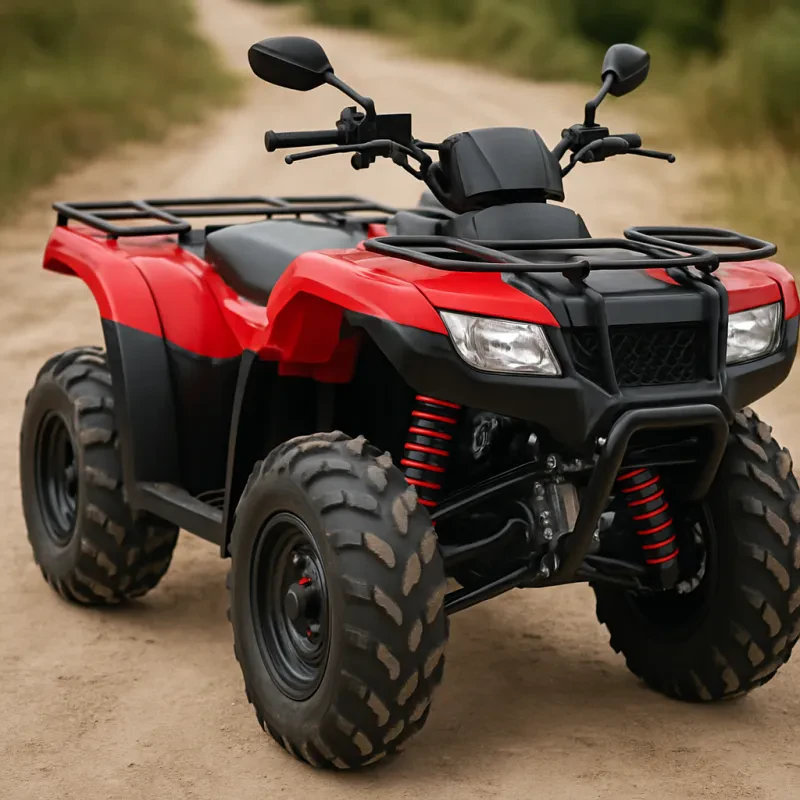To perform a brake fluid check, start by locating the brake fluid reservoir, usually found near the handlebars or under the seat. The reservoir should have markings indicating the minimum and maximum fluid levels. If you notice that the fluid is below the minimum line, it’s time to add more. Make sure to use the type of brake fluid specified in your ATV’s owner manual, as using the wrong type can lead to damage and reduced performance.
In addition to checking the fluid level, also pay attention to the color and clarity of the brake fluid. Fresh brake fluid is typically clear or slightly yellow. If you find that it has turned dark or murky, it’s a sign that it needs to be changed. Regularly replacing the brake fluid can help maintain the optimal performance of your brakes and ensure your ATV is safe to ride.
Another important aspect of ATV brake maintenance is to inspect for leaks. Check around the brake lines and connections for any signs of fluid leakage, as this can indicate a bigger issue. If you notice any leaks, it’s important to address them immediately to prevent brake failure. By incorporating these simple checks into your maintenance routine, you can keep your ATV’s braking system in top shape and enjoy a safer riding experience.
Inspect Brake Pads Often
Inspecting brake pads often is a crucial part of your ATV brake maintenance routine. Brake pads are what bring your machine to a stop, and worn out pads can lead to longer stopping distances and reduced control. Regularly checking their condition can help ensure your safety on the trails.
When inspecting your brake pads, look for any signs of wear, such as uneven thickness or cracks. The pads should be replaced if they are worn down to about a quarter of an inch. Also, pay attention to any strange noises when applying the brakes—squealing or grinding sounds can be an indication that your brake pads are deteriorating and need immediate attention.
It's also a good idea to clean the brake pads and the brake rotor during your inspections. Dirt and debris can create additional wear and decrease the effectiveness of your brakes. Using a clean, dry cloth to gently wipe these components can greatly enhance your ATV brake maintenance routine.
Finally, don’t forget to check the brake fluid level in the reservoir. Sometimes, low brake fluid can be a sign of worn-out brake pads, as the fluid level decreases with pad wear. Keeping a close eye on your brake system will not only improve braking performance but also enhance your overall safety while riding your ATV.
Clean Brake Components Thoroughly
Keeping your ATV's brake components clean is crucial for optimal performance and safety. When dirt and grime accumulate on your brake parts, it can hinder their effectiveness, leading to potential accidents. To ensure your ATV remains safe to ride, incorporate cleaning into your ATV Brake Maintenance routine.
Start by removing the wheels to gain access to the brake components. Use a brake cleaner to spray on the calipers and rotors, making sure to let it sit for a few moments. This helps break down any built-up mud or debris. After that, use a soft brush to gently scrub the surfaces, ensuring you reach all those tricky nooks and crannies. Rinse with clean water to wash away any remaining cleaner and dirt.
Don't forget to pay attention to the brake pads! Inspect them for wear and ensure they are free from contamination. If they are dirty, you can clean them with a soft cloth and some degreaser. Remember that a clean set of brake pads improves stopping power and enhances your overall ATV Brake Maintenance efforts.
After cleaning, allow everything to dry completely before reassembling your ATV. This prevents moisture from causing corrosion and ensures that all components work effectively. By adding thorough cleaning of brake components to your ATV Brake Maintenance checklist, you are taking a vital step toward safe and enjoyable rides.
Test Brake Performance Regularly
Start by testing your brakes in a safe, controlled environment. Find a flat, open space and ride at a slow speed before applying the brakes firmly. Pay attention to how the ATV responds. Do they engage quickly and bring you to a stop? Or do they feel sluggish or unresponsive? Any irregularities in how the brakes perform should be investigated further, as they could indicate a need for adjustment or repair.
In addition to regular testing, it's wise to listen for unusual sounds when braking. Squealing, grinding, or even a pulsating sensation can signal that your brakes are in distress. These signs can point to worn brake pads or other issues that require immediate attention. By incorporating these tests into your routine ATV brake maintenance, you can ensure a safer riding experience.
Lastly, don’t forget the importance of checking other related components during your brake performance tests. Look at brake fluid levels and inspect brake lines for any signs of wear or leaks. Ensuring that all parts of your braking system are in top condition can go a long way in maintaining the overall safety and reliability of your ATV. Regular brake performance testing is not just a recommendation; it’s a necessity for anyone serious about ATV brake maintenance.

